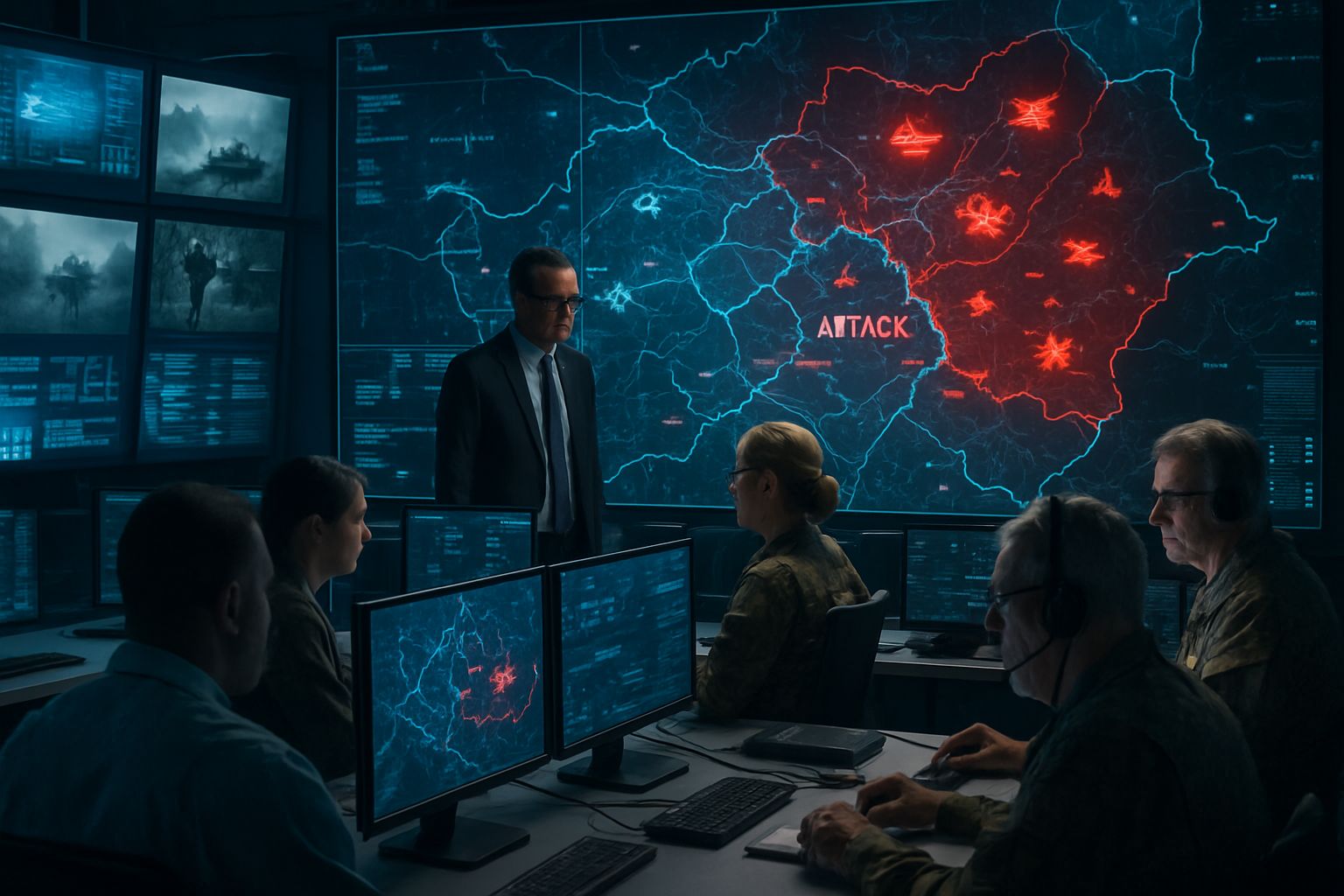
AI CERTS
3 hours ago
Pentagon boosts battlefield decision support with frontier AI
Furthermore, July’s four-vendor awards, each capped at $200 million, signal a pivot from isolated experiments toward scaled prototypes. Meanwhile, congressional oversight remains alert, demanding transparency and measurable gains. The following analysis unpacks the contracts, technologies, opportunities, and risks shaping this rapid transformation.

Pentagon Speeds AI Adoption
CDAO’s July announcement showcased a commercial-first strategy. Moreover, OpenAI, Anthropic, Google Public Sector, and xAI secured prototype ceilings worth a collective $800 million. Initial obligations stayed modest, reflecting the milestone model common to Department of Defense contracts.
DIU’s earlier Thunderforge award to Scale AI complements these deals. Additionally, Thunderforge targets operational planning at INDOPACOM and EUCOM, linking agentic models to Anduril’s Lattice platform. Market analysts project global military AI spending to double by 2030, reinforcing Pentagon urgency.
These funding moves illustrate accelerating momentum. Nevertheless, real impact hinges on field tests and follow-on obligations.
Such fiscal signals mark a decisive shift. In contrast, previous years emphasized research papers over operational pilots.
Contracts Reshape Tech Landscape
OpenAI’s June OTA, worth up to $200 million, obligated only $2 million at award. Consequently, future tranches depend on measurable prototype success. Similar mechanisms apply to other frontier vendors, aligning risk with performance.
Thunderforge operates under a separate multiyear prototype. Furthermore, Scale AI integrates large language models, simulation engines, and secure data meshes. Each vendor brings unique cloud, model, or integration strengths, expanding the ecosystem around Department of Defense contracts.
NATO allies watch closely. Moreover, Palantir and Microsoft already support alliance intelligence fusion pilots, hinting at export pathways.
The contracting picture underscores competition and collaboration. Subsequently, oversight committees will review delivery metrics before production decisions.
Agentic Workflows Explained Clearly
Traditional decision aids answer a single prompt. In contrast, agentic workflows sense, plan, act, and learn in loops. Therefore, they provide continuous battlefield decision support rather than static advice.
Consider a logistics scenario. A model ingests sensor feeds, predicts spare-part shortages, generates purchase orders, and revises plans after human feedback. Additionally, the same framework runs contingency wargames, ranking courses of action within minutes. Such speed supports next-gen warfare tempos.
However, agentic autonomy raises traceability concerns. Maynard Holliday warned that generative systems still hallucinate. Consequently, CDAO stresses human-on-the-loop governance.
Understanding these loops clarifies both promise and peril. Further sections detail practical benefits and safeguards.
Use Cases And Benefits
Four mission areas dominate early prototypes:
- Logistics automation for predictive maintenance and supply forecasting
- Threat analysis AI to triage sensor, cyber, and open-source intelligence
- Campaign wargaming for theater-level planning cycles
- Administrative support reducing staff workload across the enterprise
Moreover, AI can compress operational planning from days to hours, offering decisive advantage. Additionally, commanders obtain dynamic dashboards that update as battlefield variables change. Professionals can enhance their expertise with the AI for Government™ certification.
Cost efficiencies also matter. Consequently, predictive parts ordering reduces waste while alignment with CJADC2 initiatives promotes interoperability.
These gains promise tangible returns. However, risks must be managed, as discussed next.
Risks Demand Robust Assurance
Reliability tops the risk list. Furthermore, LLM hallucinations can mislead operational leaders. Explainability frameworks, formal verification, and red-teaming form the emerging assurance toolkit.
Cybersecurity remains critical. Moreover, adversaries could poison training data or spoof model inputs. Secure enclaves and zero-trust architectures attempt mitigation.
Ethical worries persist about autonomous escalation. Nevertheless, DoD Directive 3000.09 mandates “appropriate levels of human judgment,” keeping lethal authority human-controlled.
Balancing speed with safety defines the next test phase. Subsequently, data from GIDE events will inform policy updates.
Roadmap Toward Operational Scale
Prototype milestones will unlock larger obligations. Additionally, quarterly GIDE exercises evaluate real-world performance inside contested networks.
Meanwhile, service experiments like Project Convergence feed lessons into CJADC2 pipelines. Successful Thunderforge deliverables could transition to production by 2027, embedding battlefield decision support in everyday command systems.
Industry eyes follow-on awards. Moreover, smaller firms seek niche roles integrating analytics dashboards or specialist threat analysis AI modules.
This phased approach balances innovation and oversight. Consequently, transparency will remain vital for sustained funding.
Strategic Implications For Allies
NATO partners already pursue interoperable agentic suites. Furthermore, shared standards ensure joint targeting cycles remain coherent.
Commercial clouds lower entry barriers. Consequently, regional forces can adopt frontier capabilities without building proprietary infrastructure.
However, unequal access may widen capability gaps. In contrast, cooperative procurement could spread costs and risks. Logistics automation at alliance scale promises smoother interchange of materiel.
Allied adoption reinforces U.S. influence. Subsequently, combined testing events will measure collaborative readiness.
These developments reshape coalition dynamics. The final section distills overarching lessons and future watchpoints.
Key Takeaways Ahead
Rapid AI adoption is accelerating battlefield decision support across commands. Moreover, commercial players dominate current awards, reflecting confidence in private innovation.
Nevertheless, governance frameworks must mature alongside technical gains. Securing trust will decide whether prototypes reach full deployment.
Observing upcoming contract obligations, GIDE results, and assurance reports will reveal progress. Therefore, stakeholders should track milestone funding closely.
These insights close the analytical loop. The conclusion now summarizes core findings and proposes next actions.
U.S. defense leaders are racing to operationalize frontier AI. Consequently, new contracts, agentic workflows, and alliance pilots converge around faster, smarter battlefield decision support. Benefits span logistics automation, threat analysis AI, and scenario planning for next-gen warfare. However, success hinges on robust assurance, balanced policy, and transparent Department of Defense contracts. Therefore, readers should monitor milestone reports and explore professional upskilling. Professionals seeking to influence this transformation should pursue specialized credentials and stay engaged with emerging standards.



